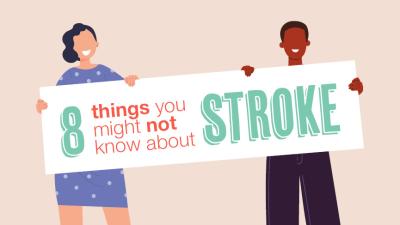
The office might seem like a safe place to work, but there are hidden risks and injuries are more common than you might think – particularly if you lack the proper equipment or set-up.
Around 1.6 million people in the UK suffer from a work-related illnesses each year according to the HSE. These illnesses come with a staggering cost, estimated at £16.2 billion.
We know that sitting for prolonged periods of time can impact our overall health, while poor posture and unsuitable equipment can lead us to develop strains and pains. Even if you currently feel comfortable, some of the most common office injuries – like Repetitive Strain Injuries (RSI) – take time to develop.
Knowing about the risks of office work is vital if you want to prevent avoidable issues down the line and keep your workers safe. So, here are the top 5 most common injuries, what causes them, and how you can prevent them.
1. Repetitive Strain Injury (RSI)

RSI can be difficult to diagnose and manage, because we don’t yet know enough about how to treat it. Its name comes from the fact that RSI is often caused when particular movements are carried out in repetition.
Activities like inputting on a computer, writing, or using tools and machinery may seem harmless, but over time these continual movements can cause small tears in muscles. The resulting inflammation causes pain and damage whenever these movements are repeated. Eventually, RSI may even lead to premature degenerative changes.
Our top recommendations for avoiding RSI are:
Use suitable, ergonomic equipment
Equipment should fit the user’s body well, be the right size and comfortable to use. Making sure all equipment and tools are suitable helps avoid awkward movements and postures, which is a key risk factor for RSI.
Take regular breaks
Moving throughout the day will improve circulation to any areas that might be affected, so make sure you take a break every 20-30 minutes. Either go for a walk, sit down (if you’re usually on your feet), or do some stretching.
Practice agile working
Try to work in a little variety throughout the day and avoid sedentary working. Sit-stand desks are a great tool if you want to quickly switch up your working style.
2. Back Pain

Whether due to prolonged sitting or poor posture, back pain is one of the most common desk job injuries. Back pain can also be caused by a number of other factors, like heavy lifting and sudden movements.
On average, workers suffering from back pain take 17 days to recover from each episode. However, there are some quick and easy ways we can lower the risk:
Stay active
As shown in an NCBI-published study, inactivity can lead to back pain. The problem is made worse while you’re inactive in a poor working position. So, keep active throughout your workday to lower the risk. As well as taking regular breaks, you could try using a chair with a movement mechanism. This will allow you to rock and swivel while you work.
Improve your office set-up
As well as making sure you have a comfortable and ergonomic office chair, you may need a back support to improve your posture and support the s-shaped curve of your spine. Sit-stand desks are also great for preventing back pain, as they encourage you to keep active.
Avoid sudden movements
Sudden twists and turns put you at risk of back pain, particularly while heavy lifting. So, make sure all your movements are careful and deliberate, and take time to stretch throughout the day.
3. Slips and falls

Painful slips and falls are common across a range of industries and settings, from warehouses to busy offices. Employers are responsible for reducing these risks, and there are a number of ways this can be achieved:
De-clutter
Boxes on the floor, mess and clutter are all hazards that can cause someone to trip and fall. A clean and well-organised workplace is not only nicer to be in, it’s safer too. If mess is a known problem, make sure to schedule regular tidy-ups to guarantee a hazard free office. Wireless equipment, like wireless keyboards and wireless mice, also help cut down on clutter by eliminating cables.
Use signs
If the floors are freshly mopped or there’s been a spillage, use caution signs to let employees know and prevent any accidents.
4. Carpal tunnel syndrome

With carpal tunnel syndrome, the median nerve (which runs from the wrist to the hand) is pinched or compressed. Common symptoms of carpal tunnel syndrome include tingling, pain and numbness in the hand and forearm.
While there are a range of causes, workers who repeatedly bend and straighten their wrists, and those who use vibrating power tools are often sufferers of carpal tunnel syndrome. Our tips to lessen the risk are:
Support your wrists
Wrist rests are a useful and inexpensive addition to your desk set-up that can make you more comfortable and reduce any strain in your hands and wrists. From wrests that sit near keyboards and mice to specialist platforms, there are a range of designs to choose from.
Take breaks from repetitive tasks
Step away from your work and stretch your hands, particularly if you’re working on a particularly repetitive task. Try making a fist, then opening out your fingers until they point straight out. Repeat 5-10 times as needed.
5. Eye strain

Eye strain can lead to discomfort and headaches, making it difficult to stay productive. Without proper lighting it’s easy to strain your eyes, and there are other risk factors too. Simply staring too long at a computer screen day-to-day can lead to eye strain, as it causes our blink rate to drop. This in turn prevents eyes from staying properly hydrated.
Dry eyes, headaches, fatigue and blurred vision are all symptoms of eye strain, but with the right techniques and equipment, they can be avoided.
Adjust your desk set-up
Check the angle, height and distance of your screen. It should be 50-62cm away from your eyes, with the centre 10-15 degrees below your eye line. Make sure to adjust fonts, font sizes and brightness too so that you see your screen clearly.
Think about lighting
Is your office well-lit? Does it benefit from different light sources, including natural light and task-specific lighting? If not, then it may be time to invest in some additional lights and lamps.
Avoiding glare is also important, so try screen filters and anti-glare keyboards if this is an issue.
Stay safe and comfortable at work
As experts in ergonomic design, we know what a big difference it makes to have the right equipment and the right set-up for each individual.
The office should be a safe, creative and comfortable space. To make your office the best it can be, we have a range of detailed assessments available that cover DSE equipment, workstations and even remote work set-ups. Contact us today to find out more.










